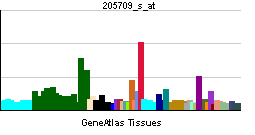Breakthrough Research Identifies CDS1/CDS2 as Key Targets in Eye Cancer

In a groundbreaking study published on July 4, 2025, in *Nature Genetics*, researchers from the Wellcome Sanger Institute have identified the gene pair CDS1 and CDS2 as critical targets in the fight against metastatic eye melanoma, a rare and aggressive form of eye cancer. This discovery holds the potential to revolutionize treatment options for patients suffering from this debilitating condition.
The study, led by Dr. Philip Chan, a lead researcher at the Wellcome Sanger Institute, utilized CRISPR-Cas9 gene-editing technology to investigate the molecular underpinnings of uveal melanoma, which affects approximately 600 individuals annually in the United Kingdom alone. Current treatment modalities are predominantly invasive, including surgical removal of the eye or radiation therapy. Although these interventions can prevent local recurrences, they often lead to metastatic disease, with nearly 50% of patients developing secondary liver cancer within two to three years post-diagnosis.
Dr. Chan emphasized the significance of this research, stating, "The identification of CDS1 and CDS2 as synthetic lethal partners provides a promising avenue for developing targeted therapies that could spare healthy tissues while effectively eliminating cancer cells."
The research team performed CRISPR screenings across ten human uveal melanoma cell lines, systematically disabling genes to reveal interactions crucial for cancer cell survival. The process identified 76 essential genes and 105 lethal gene pairs, highlighting the previously unrecognized interdependence of CDS1 and CDS2. Both genes play vital roles in phosphoinositide synthesis, a key component in cancer-related signaling pathways.
Dr. Sarah Johnson, a molecular biologist at Harvard University, noted, "This study not only enhances our understanding of uveal melanoma but may also have implications for other malignancies exhibiting low CDS1 expression. This cross-cancer applicability makes it a versatile target for future therapeutic strategies."
The findings raise hope for patients with limited treatment options, as the proposed therapeutic approach would selectively target cancer cells without affecting normal cells, a common pitfall in conventional cancer therapies. As Dr. Chan further explained, "By exploiting the synthetic lethality of the CDS1/CDS2 interaction, we can potentially develop a new class of targeted agents that are less invasive and more effective."
In addition to its implications for eye cancer, the research highlights the potential for broader applications in oncology. The study's authors have begun to explore the role of the CDS1/CDS2 interaction in various cancer types, aiming to determine its therapeutic viability across a spectrum of malignancies. Dr. Emily Wright, an oncologist at Johns Hopkins University, remarked, "Understanding the genetic vulnerabilities shared across different cancers can lead to more personalized and effective treatment options."
This study marks a significant advancement in cancer research, especially for rare cancers like uveal melanoma, where treatment options remain limited. As researchers continue to delve into the genetic intricacies of these tumors, the insights gained from the CDS1/CDS2 pathway may pave the way for innovative therapies that could change the landscape of cancer treatment.
In conclusion, the discovery of CDS1 and CDS2 as synthetic lethal partners opens new avenues for research and treatment, signaling a hopeful future for patients facing the challenges of metastatic eye cancer and potentially other forms of cancer. The implications of this research extend beyond the laboratory, with the potential to transform clinical practices and improve patient outcomes significantly.
Advertisement
Tags
Advertisement





